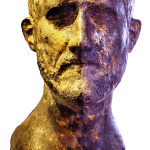Within the suburbs of Wrocław, in the village of Magnice, archaeological excavations preceding the construction of a logistics center revealed the remains of a large settlement of the Przeworsk culture from the 60’s of the 2nd century CE. The dendrochronological examination of the wooden elements of the well casing elements discovered there set the construction date as the first years of the reign of Marcus Aurelius (ca. 162-164 CE).
Links with Rome have also been documented by several silver Roman coins from this period. To commemorate this, the newly constructed street in this spot has been named after Marek Aureliusz – as the only such street in Poland.
During the excavations, apart from the remains of residential and farm buildings, a large cemetery was also discovered. In a rite typical for Przeworsk culture, usually associated with the tribe of the Vandals, several hundred bodies had been burned and buried in urns. A much smaller amount of discovered graves (ca. 10%) are skeleton burials, which in turn have been associated with two other cultures: with Goths (Wielbark culture) then living in the areas of today’s Wielkopolska and Pomerania, and also possibly with Celts (remnants of the Lusatian culture) living in Lower Silesia already before the arrival of the Germanic tribes. The current hypothesis assumes that the Celts were a conquered, but only partially assimilated social class, while the Goths visited to the settlement for diplomatic and commercial purposes. Mixed Vandal-Gothic marriages seem to have been possible among the elites, as indicated by rich Gothic female graves.







